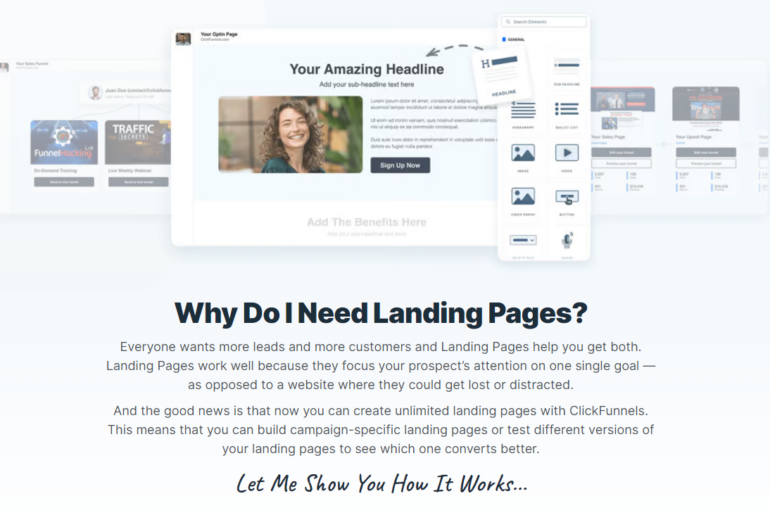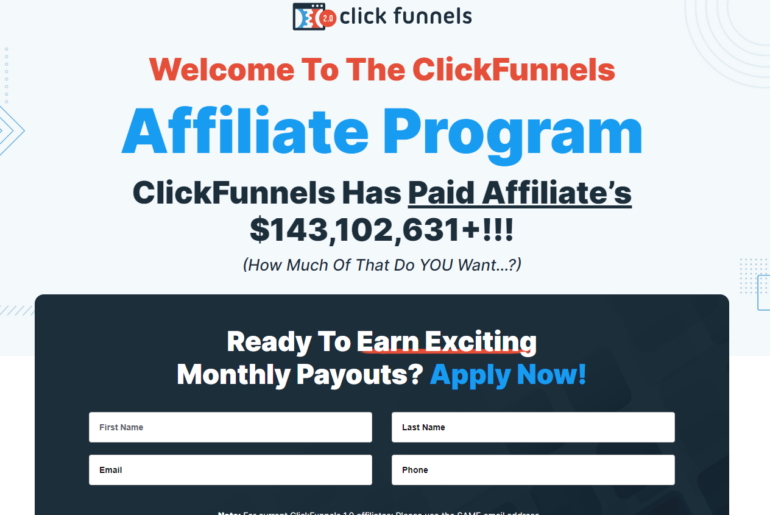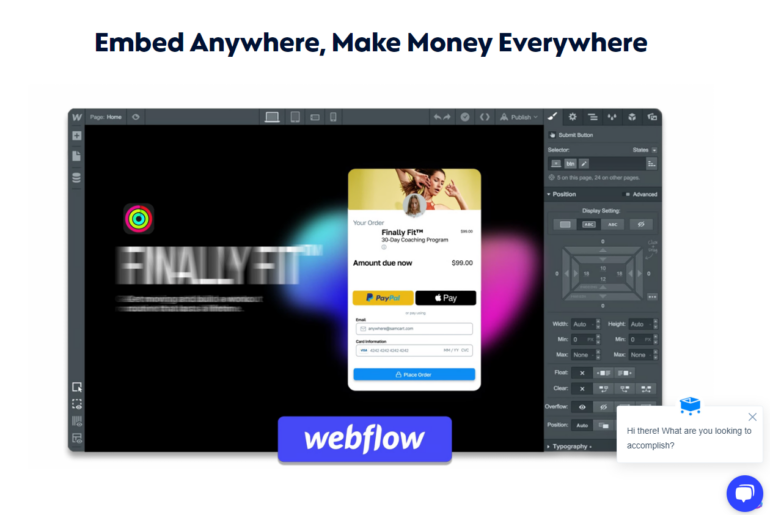Using the ideal marketing platform is the first step toward success with your email marketing campaign. With the best marketing automation platform, working with new leads or trying a better approach to reach your potential customer base can be easier.
An email marketing software is designed for managing contact lists, developing and delivering engaging emails, and other related tasks.
Among the most discussed topics related to marketing tools is Moosend vs Mailchimp. These two programs are some of the most popular software that gained notoriety due to their set of features.
Moosend vs Mailchimp: The Highlights
To determine which one is better, it is essential to accentuate their key features and other relevant details. Before that, here’s the advantages and disadvantages of each one to give you a quick overview of what they can do:
| Pros | Cons | |
| Moosend | Competitive rates Integration with several third-party apps User-friendly Plenty of available templates | Forms are not dynamic Mobile optimization can be better |
| Mailchimp | Detailed custom reports Visually appealing Easy to use Compatible with numerous apps Extensive library of email templates | Not the most budget-friendly option Automation setup needs improvement |
What Is Moosend?
Moosend is a UK-based software company specializing in marketing automation and related solutions. The tagline “Emails That Click,” promises a more accessible and more effective means to grow your business.
What Are Moosend’s Best Features?
As one of the best Mailchimp alternatives, Moosend has numerous features that new and veteran marketers can enjoy.
1. Advanced Personalized Marketing Automation
A typical email inbox can receive several messages a day, but you will find it rare for someone to read each one. If they open the message, you need to make it count. You only have a window of a couple of seconds before a customer decides to engage or ignore your email marketing campaign.
Marketers often utilize personalized marketing as a strategy to enhance the recipients’ interest in a certain product, event, or service. Using digital marketing platforms, a company may send custom-made marketing messages and product incentives to current or prospective clients.
General email marketing messages are not significantly appealing to most customers. For instance, you would have a better chance of positive engagement if you referred to them by their names instead of using honorifics.
Text personalization in emails is a straightforward way to create customized marketing material. Hyper-personalized messages can do wonders to your marketing campaign, and Moosend can automize the process. You can do image personalization and other features to increase email clicks significantly.
2. Segmentation
Market segmentation is the strategy of arranging your target consumer base into manageable classifications. It divides a market into subgroups based on shared interests, demographics, preferences, and other physical or behavioral factors used to define the target audience.
Moosend features an incredibly effective list segmentation. With your marketing lists, you can send targeted email marketing campaigns to a particular audience. You construct the segments by classifying your target market based on your previously obtained data with user activity and custom fields from past campaigns.
List segmentation allows you to narrow down your mailing lists and offer the readers something they would find interesting, which can increase the success rate.
Make strides by segmenting your recipients based on intricate criteria, such as previous purchases and times they browsed your items. Then, send them emails that factor in their past actions.
3. A/B Testing
A/B testing is a rational, scientific method of comparing side-by-side variables in marketing. It determines which variable performs better. While it is primarily associated with ad campaigns, other fields such as engineering also use this process.
Big companies and small businesses are always fine-tuning the details of their online presence to increase the chance of generating revenue. A/B testing is efficient and inexpensive, making it one of the popular ways to test the effectiveness of email marketing messages, websites, and apps.
Moosend allows you to enhance your marketing content with this method. You can work, test, and monitor the performance elements of your landing pages, subject lines, and more before sending them out to your target audience.
4. Data Analytics
The significance of reporting in email marketing cannot be overstated. It can convert fragmented, random data into something you and your company can understand and analyze.
Moosend’s reporting statistics are comprehensive, accurate, and user-friendly, saving time and making the right decisions for your email marketing initiatives.
The reporting has an entire directory with information on clicks, engagements, unsubscribes, and other activities from the recipients. This information can be useless, but the data can be valuable if collected and summarized efficiently.
When reports are easily understandable, it could positively affect your team’s administrative workload. Moosend can provide digestible and visualized reports of subscribers’ information. The analytics tool is also designed to measure your marketing efforts in detail and help maintain the momentum of your email campaign.
5. Lead Generation Features
One of the most common challenges in email marketing is generating leads or getting new subscribers. Moosend offers several features to make this process easier, such as:
- Subscription Forms
The forms generated by the Moosend editor allow you to set various settings, like visibility. You can also embed your subscription forms with a user-friendly tool, which enables easier integration with your website and other platforms.
- Landing Pages
Marketers often use landing pages to maximize their traffic when it comes to earning email subscribers. Moosend’s landing page builder offers ready-made templates with a drag-and-drop editor. Updating the design via moving, resizing, cropping, or adding content is significantly intuitive, saving you the hassle of hiring a web designer.
Moosend also includes a new WordPress plugin that lets you host landing pages on WordPress websites without needing a domain.
- Click-to-Show Forms
Popups have a reputation for being cumbersome to website visitors. Moosends understand this, and that’s why it offers click-to-show forms.
They can present your online forms whenever a customer clicks on an image, link, or button. Like landing pages, there is no need to be skilled in web designing because copy-pasting the code is all it takes.
Pricing
You may experience all the features of Moosend for 30 days without payment. The company won’t even require you to give your credit card details.
Price starts from $9 per month for 500 subscribers. There is also a custom plan offered for enterprises that need specific services. Plus, you would get an account manager feature not included in the Pro package.
What Is Mailchimp?
Mailchimp is an all-in-one email marketing solution based in Georgia, USA. Since 2001, the company has strived to empower businesses worldwide with its intelligent marketing technology.
What Are Mailchimp’s Best Features?
According to its website, Mailchimp has supported over 13 million businesses to help construct and send effective messages for growth and revenue. It does these with the help of the following features:
1. Prebuilt Automation
Mailchimp offers many ways to automate your marketing efforts. Increasing conversion rates, as well as deepening user engagement, is possible via its behavior-based automation.
The Application Programming Interface (API) lets you determine activity data and import them into Mailchimp. You can automatically reach the customers at specific moments, like after signing up. You then offer them a service or product related to their previous action.
Mailchimp has a Customer Journey Builder, which helps create automated, dynamic marketing paths for your leads. Design a journey map with different starting points, rules, and unique activities to provide a customized experience for each of your contacts.
2. Transactional Emails
Users will receive emails confirming the activities whenever they purchase something or change their account details. These are called transactional emails and are considered influential touchpoints by marketers. You may send them via API or Simple Mail Transfer Protocol (SMTP).
3. Date-based Email Automations
Using the date-based email marketing automation tool, you may plan emails to be sent out on specified days. There are many occasions to say hello, like birthdays, membership renewals, or sign-up anniversaries.
With date-based email automation, you can promote something your audience would find interesting or give them promo offers on certain items. Use the built-in email templates to create the ideal email for each customer on any occasion.
4. Email Builder
Creating engaging newsletters with email marketing software is possible by using a number of drag-and-drop email templates alone. Even better, you can use Mailchimp’s email builder to create your own.
The Creative Assistant tool will further enhance the quality of your emails. Catch your audience’s attention with suitable subject lines based on suggestions from the Subject Line Helper.
The Content Optimizer also works in the same way by providing recommendations to create appealing layouts, text, copy, and images.
5. Advanced Form Customization
Paid Mailchimp subscribers can use the advanced option for developing and updating hosted registration forms and reply emails. This is a more complex feature reserved for users with experience with custom coding.
Furthermore, most Mailchimp built-in forms are customizable, so you can create forms based on your campaign’s needs. You may also use meta redirects to send people a personalized Thank You page.
6. Segmenting Options
Mailchimp allows you to target and segment your connections based on audience and contact information. To target the correct contacts for each campaign, you may select one or merge up to five conditions.
Here are some of the segmenting conditions available:
- Automation activity
- Campaign activity
- Postcard activity
- Contact Rating
- Conversations activity
- Date added
- Email client
- Landing page activity
Every segmentation condition has a brief description of what it does. A table also displays all of the options once you toggle the drop-down. In most circumstances, there are just three options. However, for some conditions, a fourth drop-down menu is available.
7. Product Recommendations
Mailchimp’s product recommendations tool prioritizes and promotes relevant items in your shop based on personal purchase data. Including recommendations in your emails may lead to repeat purchases and more revenue.
Once the personalized offers are integrated, you can specify the details to include and how they will appear in the emails. Mailchimp ranks the relevance of items to a certain contact based on data. You can take advantage of the rankings to determine which items to promote.
Users that integrate a custom API 3.0 interface or supported eCommerce store will have personalized product suggestions.
8. Comparative Reports
As a marketer, it is crucial to be aware of enhancing your campaigns by collecting comparative reports. It is another method to understand your subscribers’ behavior better.
Comparative reports let you compare multiple regular or Really Simple Syndication (RSS) campaigns from a single audience. Select an audience and a campaign to compare, and Mailchimp will present aggregated and specific campaign stats.
Each comparative report saves your custom parameters, allowing you to replicate the same report regularly to monitor the overall campaign activity via snapshots. If you are forwarding additional marketing emails to your target audience that meet your specifications, the report will also provide data from those campaigns.
You may produce campaign snapshots manually or schedule them to manifest daily or monthly. This functionality is available with the Mailchimp Pro or Premium plans.
9. Social Share
You might wish to share your email marketing campaign with other channels once you’ve sent it. With the Social Share tool, you may instantly share email marketing campaigns with your Facebook or Twitter followers. Social media is a powerful channel to harness because the reach is not limited to the followers, unlike emails.
Using the Social Share feature may also utilize sharing merge tags to personalize your templates. These tags let campaign readers share the campaign with their friends.
After sharing your campaign, you can follow the updates on social media posts. You can see who is sharing, liking, or tweeting the ad. Email marketing can be challenging, but practicing effective strategies may help your business grow and profit.
Pricing
Mailchimp offers a free forever plan with certain restrictions, like a daily limit of 2,000 sends. Essentials package starts at $11 per month, made for email-only users.
The standard plan is Mailchimp’s recommendation, with features like data-driven automation and various optimization tools. Prices start at $17 monthly.
Lastly, the Premium plan has a starting monthly fee of $299. It is made for professionals who want more customization options for the marketing platform.
Moosend vs Mailchimp: The Comparison
These two have several similarities in regards to features. Let’s discuss the important aspects of an email marketing platform and how they fare. For an overview of what they can offer, here’s a quick comparison table showing what to expect from these platforms.
| Automation | Segmentation | Integrations | User Experience | |
| Moosend | Set trigger conditions Works with advanced segmentation Customized intervals Personalized messages | Structure distribution list based on several factors Weather-based segmentation Divide list according to behavior | Over 70 integrations, such as WordPress, Poptin, Zapier, HubSpot, WooCommerce, and Pabbly Can import data from Mailchimp Custom integrations via web API | Simple and intuitive sign-up process Drag-and-drop interface Customizable templates Image library |
| Mailchimp | Customer Journey builder Only for paying subscribers | Lookalike audience finder Segment list based on collected data, consumer behavior, and engagement history | Compatibility with roughly 300 tools and apps Allows custom integrations via API | Personalized workflow using a flow chartIntuitive interface Sync account to FB or IG business |
For more detailed insights into these things, let us look at each one more closely.
Automation
Where do Moosend and Mailchimp differ when it comes to automation? Which one offers better automation tools you can take advantage of?
Moosend
Subscribers can automate their email marketing campaigns on Moosend to help them reach the right customers at the best time. Setting numerous trigger conditions is possible, which are particular actions the recipient needs to do before the automated message is forwarded.
Moosend’s automation capabilities and advanced segmentation are designed to complement each other. For example, you can set an automated email for customers who have yet to verify their subscription. You may also provide product recommendations to clients based on order history.
While sending regular emails to your target audience is good, spamming them with offers could be detrimental. Moosend allows you to customize intervals and send personalized messages at a particular time. This way, you are not overwhelming them with emails and avoiding a reputation of being a spammer.
Mailchimp
The free plan of Mailchimp has this functionality disabled. Paying subscribers can access numerous automation features, including the Customer Journey automation builder. You can set up automated transactional emails, abandoned cart emails, and welcome emails.
With Mailchimp’s intuitive drag-and-drop editor, all automated processes are relatively easy to configure. It enables you to respond to various triggers based on customer action, particular date, or occasion.

Segmentation
As for segmentation, both Moosend and Mailchimp offer unique features you will find beneficial depending on your strategy.
Moosend
Moosend has standard segmentation options, such as the ability to structure your distribution list based on primary factors, like gender and age.
Moreover, the platform allows you to divide your list based on your recipients’ behavior. It also has weather-based segmentations, allowing you to distribute custom-made emails based on the weather.
Mailchimp
This software enables you to segment your email lists based on collected data, consumer behavior, engagement history, and more. You may segment your list based on views and purchases if you integrate Mailchimp with a supported eCommerce shop builder.
A lookalike audience finder is also included. This feature uses your CRM data and its comprehensive audience network to discover contacts that share identical attributes to your current contacts. After obtaining a lookalike audience, targeting them with social media ads is possible.
Native Integrations
The platform you pick must work flawlessly with other tools and programs you use. This way, you can streamline your processes and run your campaigns more efficiently.
Moosend
The software offers an extensive collection of plugins for a variety of categories. Moosend has over 70 native integrations, including WordPress, Poptin, Zapier, HubSpot, WooCommerce, and Pabbly.
In fact, Moosend allows you to import your distribution list from Mailchimp. So, if you are switching providers, you will be free from some manual configuration. Custom integrations are welcomed by Moosend via its web API. It enables developers to design integrations that complement the software.
Mailchimp
With about 300 compatible tools and apps, Mailchimp has more possible native integrations than Moosend. Categories such as customer service, lead generation, social media platforms, and payments are just some of the integrations you can use.
In addition to working with all your favorite apps, this platform has more to offer. Since Mailchimp includes an open API, utilizing custom integrations is possible.
User Experience
Of course, you should also consider how easy or complicated it is to use the platform. Does it have special tools that will help your campaigns succeed? How can it contribute to your business?
Moosend
If you choose to sign up for Moosend, you will find that it has a simple, intuitive process to ensure everyone can avail of its services. The drag-and-drop interface and customizable templates are incredibly user-friendly, making it easier to produce exciting emails.
It includes templates for landing pages you can revise based on your marketing strategy. An image library is also available, saving you time and resources because royalty-free images are not always free. Mailchimp does not have this feature, which can be a game-changer for some.
Mailchimp
Like Moosend, Mailchimp has an intuitive interface to ensure maximum ease of use. A personalized workflow is possible by dragging campaign pieces into a flow chart.
In addition, the content studio can sync your account to a Facebook or Instagram business account. You may integrate pictures from your social network accounts directly into your emails. This saves you the hassle of manually saving images and uploading them to Mailchimp. You can also do the same processes for photos from compatible eCommerce platforms.
Mailchimp vs Moosend FAQs
1. Which is the better email marketing platform?
Determining the winner of the Mailchimp vs Moosend debate largely depends on your business needs. It is critical to explore several factors before deciding which one is the better email marketing platform for you.
If you are new to email marketing, we recommend trying Mailchimp’s Free plan first. The software offers more advanced features and contacts than Moosend’s Pro plan. Mailchimp is highly recommended for new businesses that want to see how an email marketing platform works.
On the other hand, you may consider Moosend if you are after the features and costs associated with the distribution list size. It is also the better choice for businesses with physical and online shops because of the eCommerce AI.
2. Besides Moosend, what are some other Mailchimp alternatives?
Some are reluctant to consider Mailchimp because it is not necessarily the most budget-friendly email marketing platform. In addition to that, some features may be lacking even if you are a paid subscriber.
- Sendinblue offers an easy-to-use interface with exceptional marketing automation features. A free version is available.
- Hubspot provides a more comprehensive software solution for businesses, such as email marketing, CRM, and free live chat. Automation is superior compared to Mailchimp.
- Omnisend Pro is cheaper than Mailchimp’s Premium plan but has better automation and extra marketing features. Its free version also offers more support.
3. How to make the recipients open and read your emails?
Recipients open and read emails from those they deem credible, engaging, and relevant. Usually, they respond positively to messages tailored to their preferences. If your message can convey a sense of urgency, recipients might also become interested.
4. Is buying an email list recommended?
Most reputable email marketers are against buying email lists. It is considered inferior because using a purchased email list can tarnish your brand, get your messages flagged as spam, and lower the chances of earning revenue. In short, there is no benefit in buying an email list.
5. How to bypass the spam filter?
Some email marketers practice over-personalized automated messages to ensure the emails won’t end up in the spam folder. However, the most effective way is via double opt-in.
You get the recipients’ permission to sign up for your marketing campaign and confirm their subscription via a follow-up email. This way, the emails will not get flagged as spam. However, if they use Gmail, the emails might get filtered to the Promotions folder.
Which Is the Better Marketing Automation Platform?
When choosing between Mailchimp vs Moosend, there isn’t a clear-cut winner because the better digital marketing software depends on your budget and requirements. Moosend is the less expensive option, ideal for small business owners and startups. You will get a slew of appealing features without paying over the top.
In comparison, Mailchimp is king when it comes to list management. You will also gain access to plenty of customizable templates, newsletter templates, and other useful tools.
Your best bet is assessing your campaign’s needs and seeing which offers the most potential. Through the help of this guide, you can make a well-informed decision that will benefit your business.







